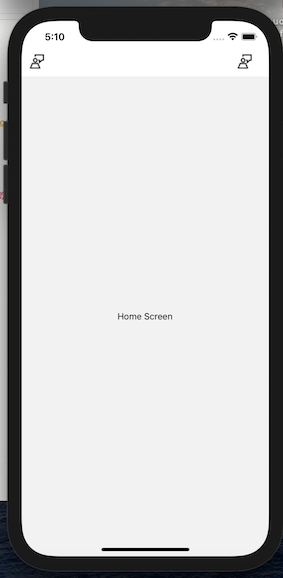昨天的文章中已將 navigation 安裝完成
今天就要開始當導覽王了!
一起來轉頁吧吧吧~
.src
├── assets
│ └── icons
│ └── icon-winning.png
│ └── actionPrimary.png
├── common
├── components
│ └── Flex1.js
├── constants
│ ├── assets.js
│ ├── index.js
│ └── style.js
├── screens /// 在這裡
│ └── IconScreen.js // 我使用了上次的 IconScreen 頁面 XD
└── utils
懶得寫的人可以直接沿用我之前的 code XD
import React from 'react';
import {Image, View, Text} from 'react-native';
import {assets, SIZE, fonts} from '@src/constants';
const IconScreen = () => {
return (
<View style={{flex: 1, justifyContent: 'center', alignItems: 'center'}}>
{/* <Flex1 /> */}
<Text style={fonts.h3}>我是h3</Text>
<View
style={{
justifyContent: 'center',
alignItems: 'center',
backgroundColor: 'black',
}}>
{console.log('height:', SIZE.height, 'width:', SIZE.width)}
<Image style={{width: 30, height: 30}} source={assets.winIcon} />
</View>
</View>
);
};
export default IconScreen;
在這邊我只列出基本常用的,詳細的請參考網址
在這邊我只列出基本常用的,詳細的請參考網址
import 'react-native-gesture-handler';
import React from 'react';
import {NavigationContainer} from '@react-navigation/native';
import {createStackNavigator} from '@react-navigation/stack';
import {Text, View} from 'react-native';
import IconScreen from '@screens/IconScreen'; // 引入 IconScreen
const Stack = createStackNavigator();
// Home 為首頁, 也是可以自己開一個 screen 檔案
const Home = ({navigation}) => {
return (
<View style={{flex: 1, justifyContent: 'center', alignItems: 'center'}}>
<Text>Home Screen</Text>
</View>
);
};
const App = () => {
return (
<NavigationContainer>
<Stack.Navigator initialRouteName="Home"> // initialRouteName 設定初始的頁面我指向 Home
<Stack.Screen name="Home" component={Home} /> // name 就像是頁面的id ; component 為指定的component頁面
<Stack.Screen name="IconScreen" component={IconScreen} /> // Stack 新加入頁面
</Stack.Navigator>
</NavigationContainer>
);
};
export default App;
基本上倘若每個畫面的 header opetions 類似,我會先把它寫成一個 constant 帶入
來給大家一個例子包含:
const headerOptions = ({ route, navigation }) => ({
title: route.params ? route.params.title : props.title ? props.title : "",
// 路由的參數判斷
headerTintColor: "black",
// 字體顏色
headerTitleStyle: { alignSelf: "center", fontSize: 16 }, // header 樣式
headerStyle: {
height: Platform.OS === "ios" ? 88 : 44,
},
// 使用裝置來判斷 header 的高度
headerRight: () => (
<Image source={assets.actionPrimary} style={[styles.actionPrimary]} />
),
// 右邊放入圖
headerLeft: () => (
<TouchableOpacity
onPress={() => {
navigation.goBack();
}}>
<Image
source={assets.actionPrimary}
style={[styles.actionPrimary]}
onPress={() => {
navigation.goBack();
}}
/>
</TouchableOpacity>
),
// 左邊放入圖並使用 navigation.goBack() 回上一頁
=
});
再放入 App.js
const App = () => {
return (
<NavigationContainer>
<Stack.Navigator initialRouteName="Home" >
<Stack.Screen name="Home" component={Home} options={headerOptions} /> // 放!
<Stack.Screen name="IconScreen" component={IconScreen} options={headerOptions} /> // 放!
</Stack.Navigator>
</NavigationContainer>
);
};
下指令
npm run ios

表頭!!!出現了~~
Day 14 done!!! 下一篇是跳轉頁面跟回上一頁的教學
